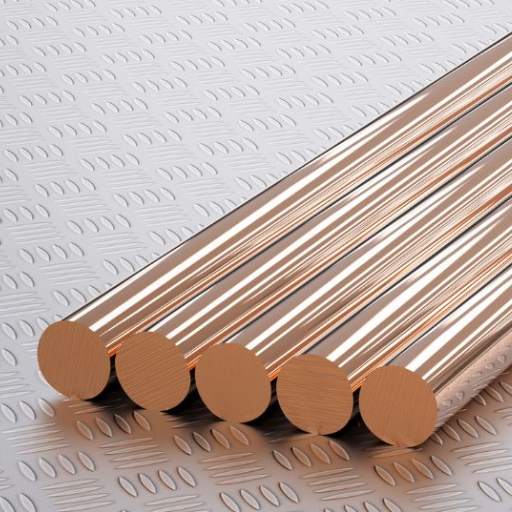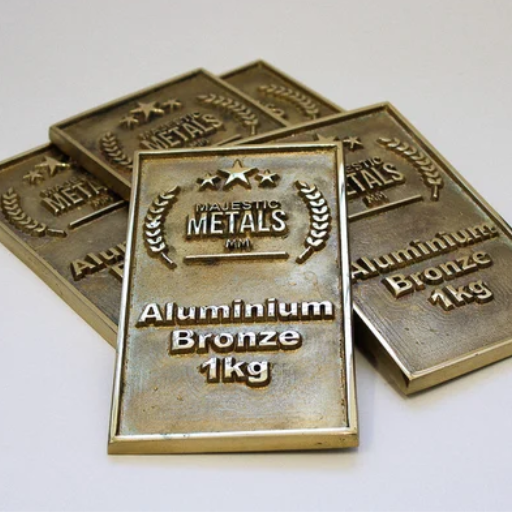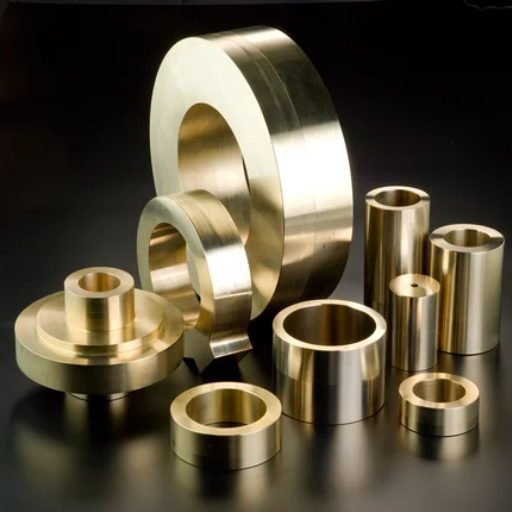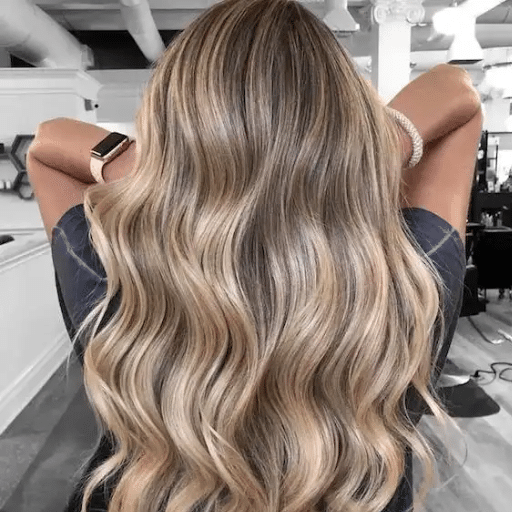There are aluminum bronze alloys which are copper based metals with aluminum as the principle alloying element. These alloys, remembered for their high strength, resistance to corrosion, and wear resistance, have found widespread use in many challenging applications. This blog seeks to delve deep into the world of aluminum-bronze alloy by examining its unique features, mechanical properties and practical uses. For engineers, people doing research in material science or those curious about metallurgical advancement this is a complete guide that will give you a clear idea of why aluminium bronze has remained the preferred material in many industries.
What Are the Key Properties of Aluminum Bronze Alloy?

Image source: https://www.wieland-diversified.com/
Impressive strength and excellent corrosion resistance are the distinguishing features of aluminum bronze alloys. Key properties include high tensile strength, which varies between 85 to 155 ksi and resistance to wear and galling. This family also demonstrates great thermal and electrical conductivity, a fact that makes them suitable for various electrical applications. Moreover, aluminum bronze alloys have low magnetic permeability and are incredibly resistant to oxidation in both air and water. In marine and industrial environments where harsh conditions prevail; these materials would be really reliable because of their combined properties.
Understanding the Mechanical Properties of Aluminum Bronze
A host of mechanical properties makes aluminum bronze alloys suitable for tough jobs. It is useful in the construction sectors where its tensile strength is typically between 85000 and 155000 pounds per square inch. Due to excellent resistance to wear and abrasion, such combination are highly demanded in cases when heavy friction occurs like in gears, bearings and bushings.
Moreover, this type of alloy has a very low co-efficient of friction which minimizes wearing out effect thereby increasing the lifespan of mechanical parts. It will not fail even under cyclic loads; it shows fatigue resistance as a leading feature. To sum up, these metal elements have been utilized in marine vessels and constructions, aerospace establishments as well as heavy machines because they are highly durable, resistant to wearing out and always reliable.
Exploring the Physical Properties of Aluminum Bronze
A variety of physical properties is responsible for the application of aluminum bronze alloys in numerous industries. One of their main characteristics is being able to resist corrosion especially in environments where seawater, industrial chemicals and sulfurous compounds are found. This makes aluminum bronze perfect for marine use. These alloys are also characterized by high thermal conductivity, which ensures efficient heat transfer and makes them appropriate for such components as heat exchangers and welding fixtures.
Furthermore, aluminum bronze has a negligible magnetic permeability, making it useful in applications requiring non-magnetic materials such as ship hulls, mine countermeasure devices and electrical equipment. Moreover, these alloys possess a unique golden shade resulting from their high copper contents that makes them to have both aesthetic appeal and functional advantages in architectural and decorative field.
To sum up, some key physical attributes like; very good resistance to corrosion, conductivity of heat, low magnetic permeability coupled with good look characteristic make an array of Aluminum Bronze usable in various tough applications.
The Tensile Strength and Hardness of Aluminum Bronze
Tensile strength of aluminum bronze alloys usually varies from 500 to 800 MPa, depending on their exact composition and heat treatment. Its elevated tensile strength makes it an ideal material for heavy duty components experiencing substantial mechanical stress. In addition these alloys are characterised by a hardness level spanning approximately 100-200 Brinell that varies across different types and treatment procedures. This characteristic enhances the use of these materials in mechanical, structural applications because it makes them durable and resistant to wear. Hence, combining high tensile strength with considerable hardness makes aluminium bronze most suitable for critical engineering applications.
How Does Corrosion Resistance Affect Aluminum Bronze?

The corrosion resistance of the material significantly increases the usefulness and durability of aluminum bronze alloys in different environments. These attributes allow aluminum bronze components to resist oxidation and decay, making them stay intact for extended periods in gases such as air, seawater, and industrial chemicals even under harsh operating conditions. Aluminum bronze is therefore excellent for corrosive application like marine apparatus, chemical processing plants among others. This results in low maintenance cost due to its high corrosion resistance and prolonged life span of parts making it a cost-effective option for critical applications.
The Role of Oxide Layer in Corrosion Resistance
Regarding aluminum bronze alloys, a crucial part is played by the oxide layer which forms on their surface thereby making them highly resistant to corrosion. This layer formed naturally consists mostly of aluminium oxide that acts as a barrier preventing various corrosive environments from attacking it. As such, this oxide layer prevents oxygen and other corrosive materials from getting into the metal’s surface. In doing so, it stabilizes the material and hinders further oxidation. The self-healing feature implies that even minor destruction of this compound is restored immediately hence ensuring that it remains immune to corrosion with time. Accordingly, when facing protracted exposure to corroding elements, aluminum bronze can be considered due to its resilient coating of oxide.
The Impact of Seawater on Aluminum Bronze Corrosion Resistance
The fact that aluminum bronze is a mixture of copper, nickel and iron metalloids makes it one of the most resistant metals to seawater corrosion. It boosts mechanical properties while helping in marine environment resistance. Aluminum found in the alloy helps create an oxide layer which stabilizes it against saltwater degradation. Also, there is the involvement of an element called nickel which helps prevent pitting and crevice corrosion especially when in saline conditions. This results into aluminum bronze being commonly used in maritime applications e.g. ship propellers, seawater valves and marine fasteners due to their requirement for long life expectancy and trustworthiness.
What Are the Typical Uses of Aluminum Bronze?

Due to its excellent strength, resistance to corrosion and durable nature, aluminum bronze is widely used in diverse industries. It is normally applied in general marine hardware such as seawater valves, ship propellers and marine fasteners where properties that enable it resists saltwater corrosion are critical. The aerospace industry uses aluminum bronze for strength-to-weight ratio as well as wear and fatigue tolerance. Further, the alloy is also found in heavy industrial bearings, bushings and gears since it has good bearing capacity and abrasion resistant qualities. Furthermore, its incredible characteristics make it very useful in making tools, electrical connectors, or even decorative architectural elements.
Applications in Valve Components and Bearings
The remarkable properties of Aluminum bronze alloys have made them widely used in valve components as well as bearings. The alloy exhibits resistance to corrosion, wear and erosion which are essential for the preservation of functionality even when operated under harsh conditions. Therefore, valves made from it can withstand very high pressures and temperatures without the occurrence of any deformities or failure since its strength and toughness guarantees that.
For instance, aluminum bronze is preferred for bearings because it has excellent load carrying capacity and resistance to abrasive wear. This makes it an ideal choice for heavy duty applications where durability and reliability are paramount factors. Additionally, having a low friction coefficient, such materials minimize the rate at which both themselves and their mating surfaces get worn out hence leading to longer life span on operation and reduced maintenance costs. These features make aluminum bronze bearings appropriate for various industrial machinery, automotive parts among others aviation equipment also use this material in making the bearings.
Common Uses in Propellers and Marine Environments
Aluminum bronze is widely used in propellers and other marine applications because of its incredible ability to resist corrosion, especially in seawater. Its protective oxide film makes this alloy able to survive the severe marine environment, thereby reducing the rate of corrosion and extending the service life of marine parts. Further, The high strength as well as toughness of aluminum bronze make it an excellent material for making strong and reliable propellers that can withstand a lot of mechanical stress during operation. As a result of this, it has also good wear resistance thus ensuring that propellers continue to be efficient with less frequent replacement and maintenance. All these properties culminate in making aluminum bronze a must-have material in the marine sector mainly when it comes to components exposed to salt water or other corrosive environments.
Why Aluminum Bronze is a Preferred Choice for Bushing and Castings
Due to the exceptional mechanical properties and high performance in challenging conditions, aluminum bronze is a top choice for castings and bushing materials. In this regard, the alloy has remarkable strength and hardness that make it last longer even in intensive application. Among the major advantages of aluminum bronze are its excellent resistance to corrosion that makes it perfect for use in marine and industrial environments dealing with seawater or aggressive chemicals. The material also has low frictional coefficient and high wear resistance which are critical factors for reducing maintenance requirements as well as operational downtime. Aluminum bronze also demonstrates good thermal conductivity together with electrical one, which is important when such properties serve vital roles in some applications. Consequently, all these qualities make aluminum bronze an effective, dependable material for use in casting and bushing components within numerous industries across the globe.
How Does Nickel Affect Aluminum Bronze Properties?

Nickel greatly enhances the properties of aluminum bronze in terms of its strength, hardness and resistance to corrosion. Whilst nickel makes the material more ductile and resistant to fatigue when it is added to the alloy, which also makes it stronger against mechanical tensions and frictions that lead to wear and tear. Moreover, nickel leads to a better protection against oxidation and corrosion, particularly in harsh environments like marine ones. The increased efficiency prolongs service life of components made from this material thereby reducing maintenance needs while ensuring reliable performance. These improvements make nickel a vital element in tailoring aluminum bronze for use in various industries.
The Role of Nickel Aluminum Bronze in Enhancing Strength and Corrosion Resistance
Nickel aluminium bronze (NAB) is regarded as having an excellent combination of strength and resistance to corrosion largely because the alloy contains some amount of nickel. By increasing its hardness, tensile strength and impact resistance among others, the addition of nickel raises the overall mechanical properties of aluminium bronze or hardens it further towards other mechanical wearing processes. For this reason, NAB is suitable for high-stress applications where resilience is valued the most. On top of that, by developing a protective oxide film over its surface, Nickel augments the chloride pitting resistance of aluminium bronze alloys used in seawater conditions such as those encountered offshore oil production platforms. Such coating significantly slows down corrosive rate giving longer component’s lifespan resulting into less frequent replacement or repairs being required for them to work well. All these characteristics make Nickel Aluminum Bronze ideal for application in Marine Engineering, Offshore Oil & Gas industry among others where material must survive serious operating environment conditions like sea water exposure.
Importance of Nickel in Improving Mechanical Properties
The importance of nickel in improving the mechanical properties of aluminum bronze alloys has been highlighted by many sources. It is crucial to the increase of hardeness and ductility of the alloy, thereby enhancing its tensile and yield strength. This is particularly useful for areas that demand high elasticity and resistance against attrition. Moreover, it promotes a finer grain structure in the alloy thus making it tougher overall and more resistant to mechanical stress. Such changes are important for industries where materials undergo cyclic or fatigue loading that ensures durability and reliability of components for a long time period.
What Is the Machinability and Weldability of Aluminum Bronze?

Nickel aluminum bronze is widely regarded as being highly machinable, although it can be more difficult to machine than other copper alloys because of its increased strength. Correct use of the right tooling and machining techniques, including the application of sharp carbide tools, and controlling cutting speeds will be helpful in obtaining accurate results with no excessive wear on the tools. Moreover, it has great weldability which makes it appropriate for processes such as MIG welding and TIG welding. Therefore, proper preheating and post-weld heat treatment are essential in avoiding cracking and ensuring that strong lasting welds are made. These characteristics make aluminum bronze a versatile material suitable for diverse industrial applications where it is considered reliable.
Factors Affecting the Machinability of Aluminum Bronze
Machinability of aluminum bronze alloys is influenced by a number of factors that determine how easily it can be machined into the desired shape and size.
- Alloy Composition: The specific composition of the aluminum bronze alloy, especially aluminum, nickel and other elements contained will impact its machinability. Machining may be made difficult by higher content of aluminum which in turn generally increases hardness. Presence of elements such as iron or nickel in these alloys may also affect the machinability because they change their hardness and wear resistance.
- Microstructure: Grain structure within the alloy significantly affects machinability. Finer grain structures improve machinability since they allow for smoother cuts and less tool wear on them. A controlled cooling rate during processing will optimize microstructure thereby improving machining properties.
- Heat Treatment: Proper heat treatment processes play important roles to enhance machinability through removing internal stresses and refining the microstructure of the alloy. By reducing hardness while increasing ductility, techniques like annealing and stress relieving facilitate easier machining of Aluminum Bronze.
Through comprehension and regulation of these issues manufacturers can refine their ability to machine aluminium bronze resulting in high accuracy works and longer tool life in various industrial operations.
Challenges and Techniques in Weldability of Aluminum Bronze
For the welding process of aluminum bronze, a number of challenges and techniques must be followed to achieve properly done joints that are strong and free from faults.
- Porosity: This may lead to weak welds. This problem is frequently caused by hydrogen which can be introduced through impurities or moisture, thereby causing the entrapment. It is therefore important to ensure thorough cleaning of the base material and filler metals as well as using appropriate shielding gases such as argon when protecting the weld pool.
- Hot Cracking: Hot cracking sometimes referred to as solidification cracking may result from composition and thermal properties of the alloy. Thermal gradients may be reduced through regulation of cooling speed and employment of preheating means where essential. In addition, hot cracks could also be minimized by making use of fillers with compatible compositions.
- Oxide Formation: Aluminum bronze alloys have tendency to form tough oxide layers on their surfaces which are detrimental to weld quality and cause inclusion. Mechanical or chemical cleaning procedures should thus be carried out before welding commences. Also, keeping an inert gas atmosphere around the zone where one is expected to make a weld helps in preventing formation oxides during welding operations.
By understanding these problems and practicing best methods in this area, a user will be able to provide high quality metalwork for various industries including automotive industry.
Frequently Asked Questions (FAQs)
Q: What is a purpose aluminum bronze alloy?
A: A purpose aluminum bronze alloy is designed to offer a combination of mechanical strength, wear resistance, and exceptional corrosion resistance. Alloys containing aluminum, such as the nickel-aluminum bronze, are commonly used where these properties are required.
Q: What are the key properties of the C95400 aluminum bronze alloy?
A: The C95400 aluminum bronze alloy, known by its UNS number C954, combines high mechanical strength, wear resistance, and exceptional corrosion resistance. It is also non-sparking and has good thermal conductivity, making it suitable for both high temperatures and corrosive environments.
Q: How does aluminum bronze compare to other copper-based alloys?
A: Aluminum bronze is also superior to other copper-based alloys in terms of mechanical strength, wear resistance, and corrosion resistance. For example, compared to brass or beryllium copper, aluminum bronze has a higher combination of mechanical properties and better resistance to corrosive environments.
Q: What is the significance of iron and nickel in aluminum bronze alloys?
A: Iron and nickel are often added to aluminum bronze alloys to enhance their mechanical strength and corrosion resistance. The addition of nickel, as seen in nickel-aluminum bronze, improves overall durability and enhances resistance to cavitation and wear.
Q: Can aluminum bronze alloys be heat-treated?
A: Yes, aluminum bronze alloys can undergo heat treatment to improve their mechanical properties. Heat treatment can involve processes such as solution annealing and aging to enhance the material’s strength, hardness, and wear resistance.
Q: What are the typical applications of aluminum bronze alloys?
A: Aluminum bronze is used in a variety of applications, including marine hardware, pump and valve components, ship propellers, and bearing bushes. These alloys are ideal for situations where high strength and exceptional corrosion resistance are required, especially in sea water environments.
Q: How do the thermal properties of aluminum bronze alloys affect their applications?
A: The thermal properties of aluminum bronze alloys, such as their ability to retain strength at high temperatures, make them suitable for use in applications involving extreme thermal conditions. They also provide good thermal conductivity, which is beneficial in heat exchangers and other temperature-sensitive equipment.
Q: How does aluminum bronze perform in corrosive environments?
A: Aluminum bronze is highly resistant to corrosion, particularly in sea water and other salt water environments. It shows excellent performance against corrosive elements, making it a preferred material for marine and industrial applications exposed to harsh substances.
Q: What welding techniques are suitable for aluminum bronze?
A: Welding aluminum bronze requires specific techniques due to its unique properties. Processes such as MIG, TIG, and resistance welding are commonly used. Pre-weld heat treatment is often recommended to minimize cracking and ensure a strong bond.
Q: Where can I get more information about aluminum bronze alloys?
A: For more detailed information about aluminum bronze alloys, their properties, and their applications, please contact us. Our team is available to provide comprehensive guidance and answer any specific questions you may have.









